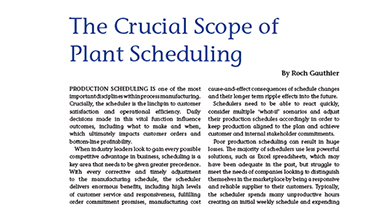You finally have that new hire you have been coveting — a great resume, the right certifications, fresh out of a university with a great supply chain program. You spent months getting the requisition approved, searching through candidates and working with HR. Now what?
We all know the workforce is changing, but many will be surprised at just how quickly. New graduates are not looking towards oil majors for their future careers — they want to work for Tesla! Recruitment success is driven by a focus on renewability and diversity, not by IRAs and vacation days. Research shows that 57 percent of teens see the fossil fuel industry as bad for society, and only 2 percent of college graduates in the United States list the oil and gas industry as their top choice for a career.
Manufacturing of all types is similarly impacted, with 10,000 baby boomers retiring everyday — and taking their accumulated knowledge with them. Talent is more important than ever, and that means recruiting and retaining millennials.
Supply chains are increasing in complexity at an unprecedented rate, and the competition always seems to be one step ahead. How then does a supply chain organization develop and retain the talent necessary to keep its business competitive in the years to come? How do you keep a new hire, who has had an iPhone since youth, engaged and focused on the goals at hand?
Understanding the Next Generation of Talent
Millennials are “digital natives,” adept at leveraging technology and focused on the why, not the what. Millennials are frequently described as “job hoppers,” and surveys show job hopping has nearly doubled over the last 20 years. There are numerous reasons for this increase, but one key factor is that many supply chain organizations do not give their employees the tools and technology to keep them engaged and motivated.
Let’s take an average production planner or scheduler at a typical manufacturing facility. Week One they sit down for training, typically with a more experienced manager — the person not yet ready for retirement, but getting close. The new hire is hopeful, asking, “What tools are we going to learn?” or “How can I add value?” All too often, what the new hire finds is processes dominated by Excel spreadsheets and manual, outdated tools. Information is siloed, inefficiencies run rampant, and communication is poor.
What else can be expected from the overuse use of Excel and other outdated tools ? Using these types of tools and processes is frustrating and error-prone — nothing “just works.” So our newly minted planner spends time fixing schedules and maintaining data, not optimizing schedules. Work becomes reactive, with most days spent “putting out fires” with little to no value added.
Worse yet, management is often satisfied with the status quo of “If it isn’t broken, don’t fix it” and “That wouldn’t work for us.” Engagement plummets, and before you realize it, that new hire — who just recently was the future of your supply chain organization — is off to a new opportunity.
Who, if anyone, is to blame in this scenario? Frequently the blame falls on the outgoing employee or, more broadly, millennials in general. It is easy to blame a generation; however, difficulties posed by millennials in the workforce are the beginning of a greater revolution. Supply chain complexity is increasing at a staggering rate, and so are the needs for tools and technology to manage this complexity.
Leverage the Resources Available to You
Organizations are not just competing for customers; they are competing for talent, and that does not end once a new hire is in the door. The technology necessary to achieve your supply chain goals and increase retention rates exists, but far too many organizations do not leverage these tools.
Is your supply chain organization simply maintaining the status quo while the world (and the workforce) changes around you? Or do your employees have the tools and technology required to add value?
To learn more about how the latest tools and technology can help you recruit and retain talent, check out our Manufacturing & Supply Chain solutions or contact supplychain@aspentech.com.






Leave A Comment